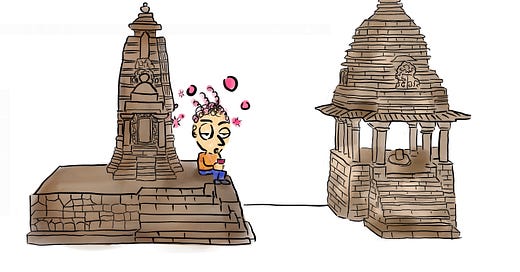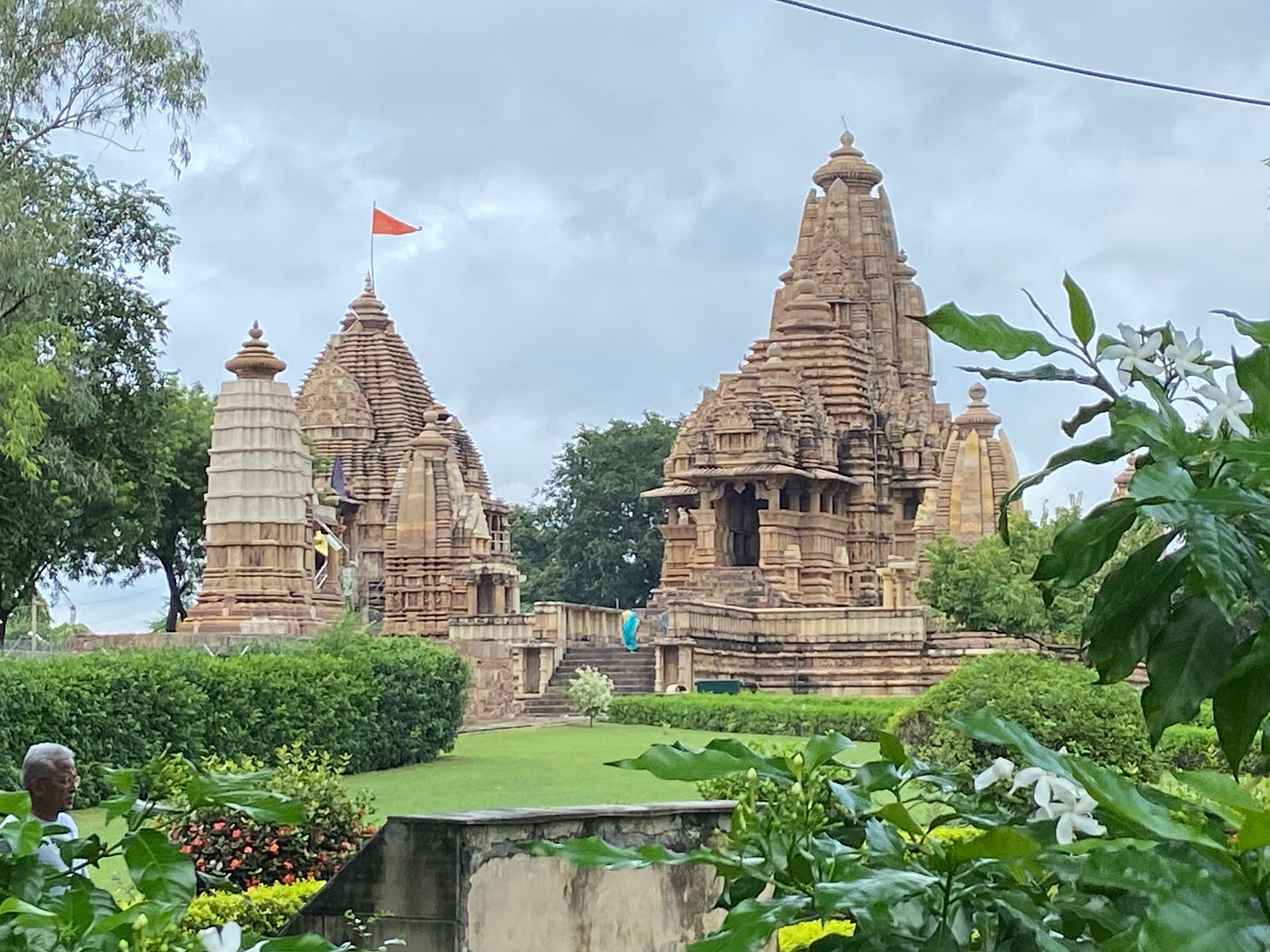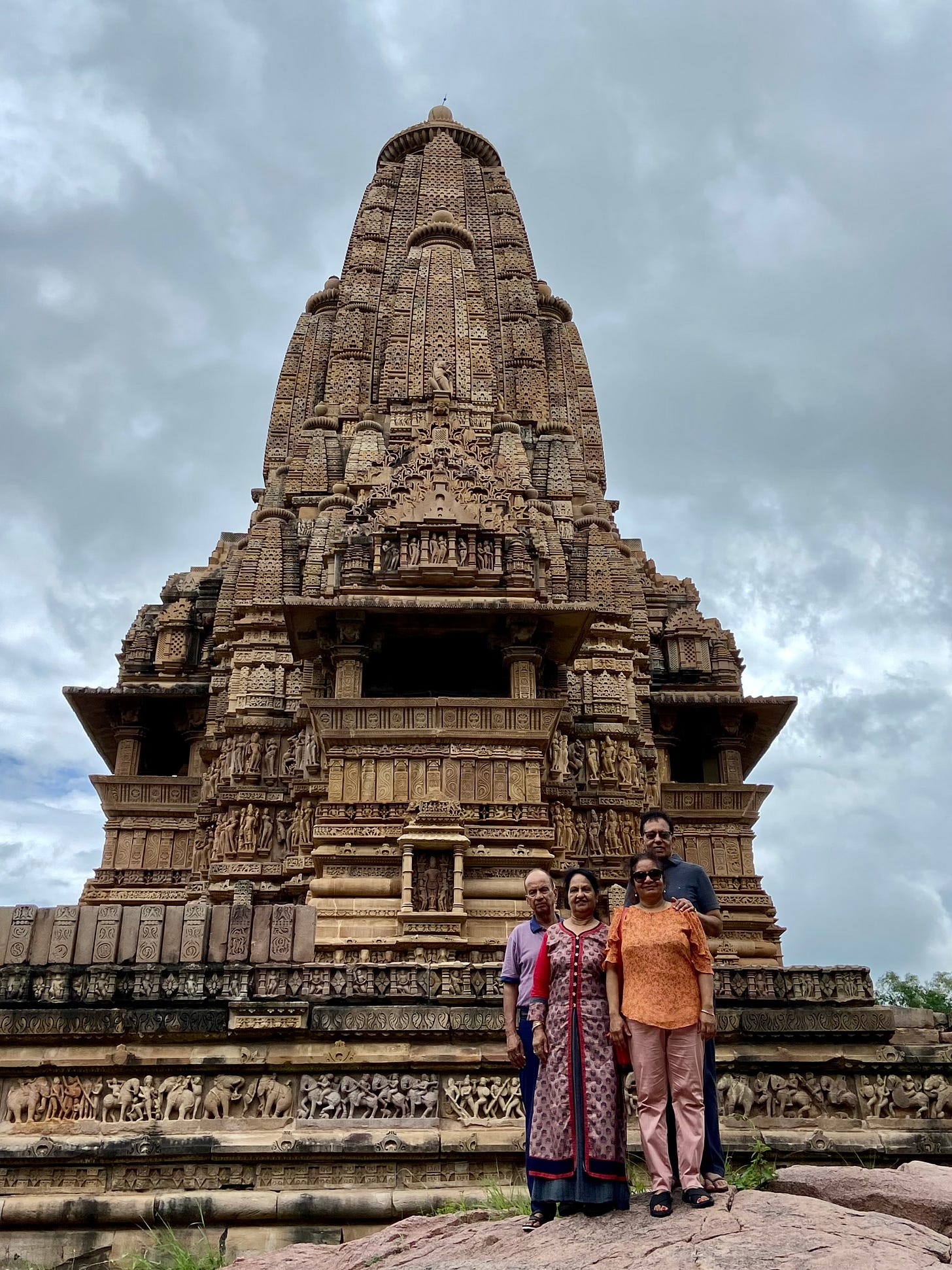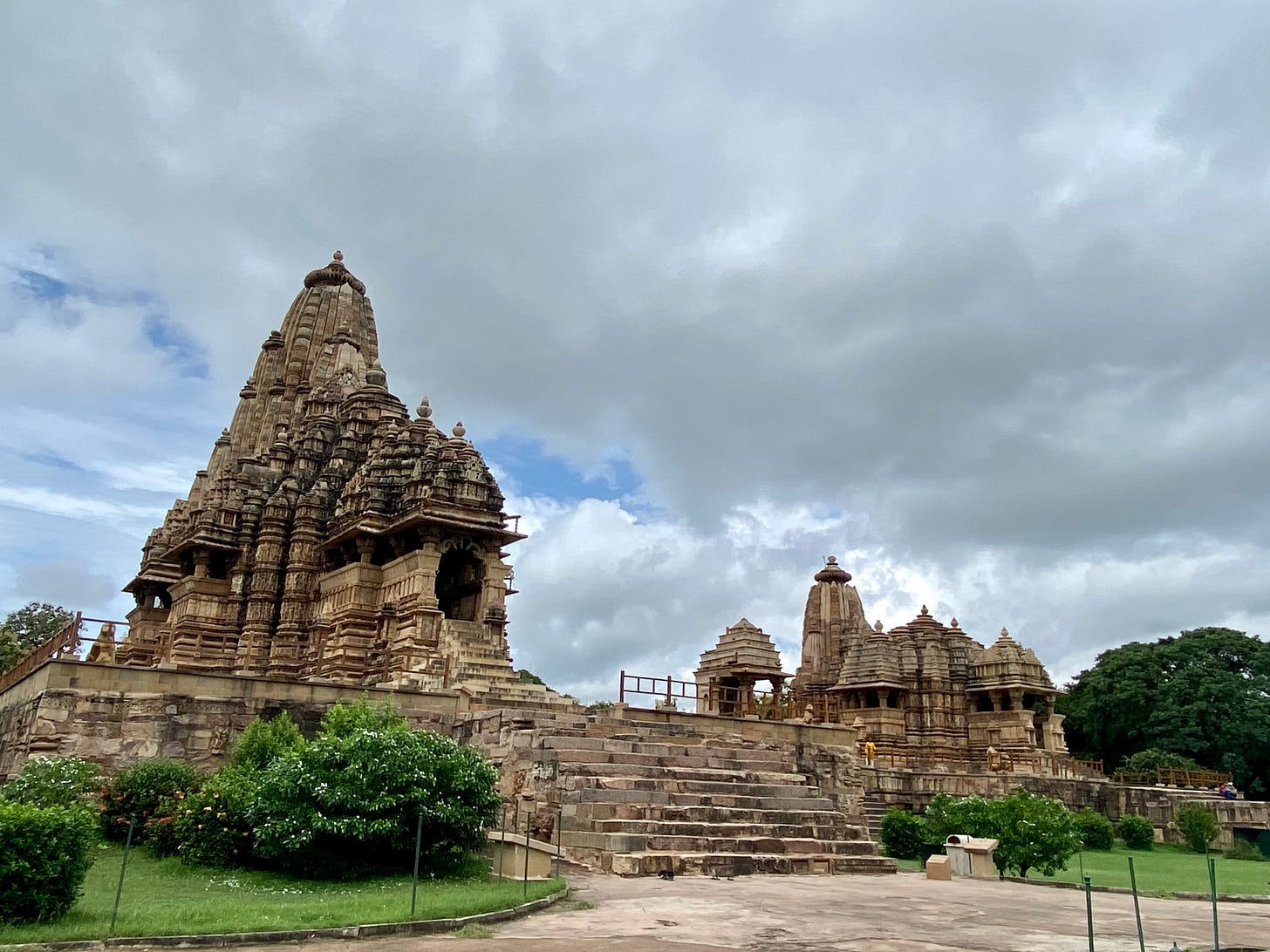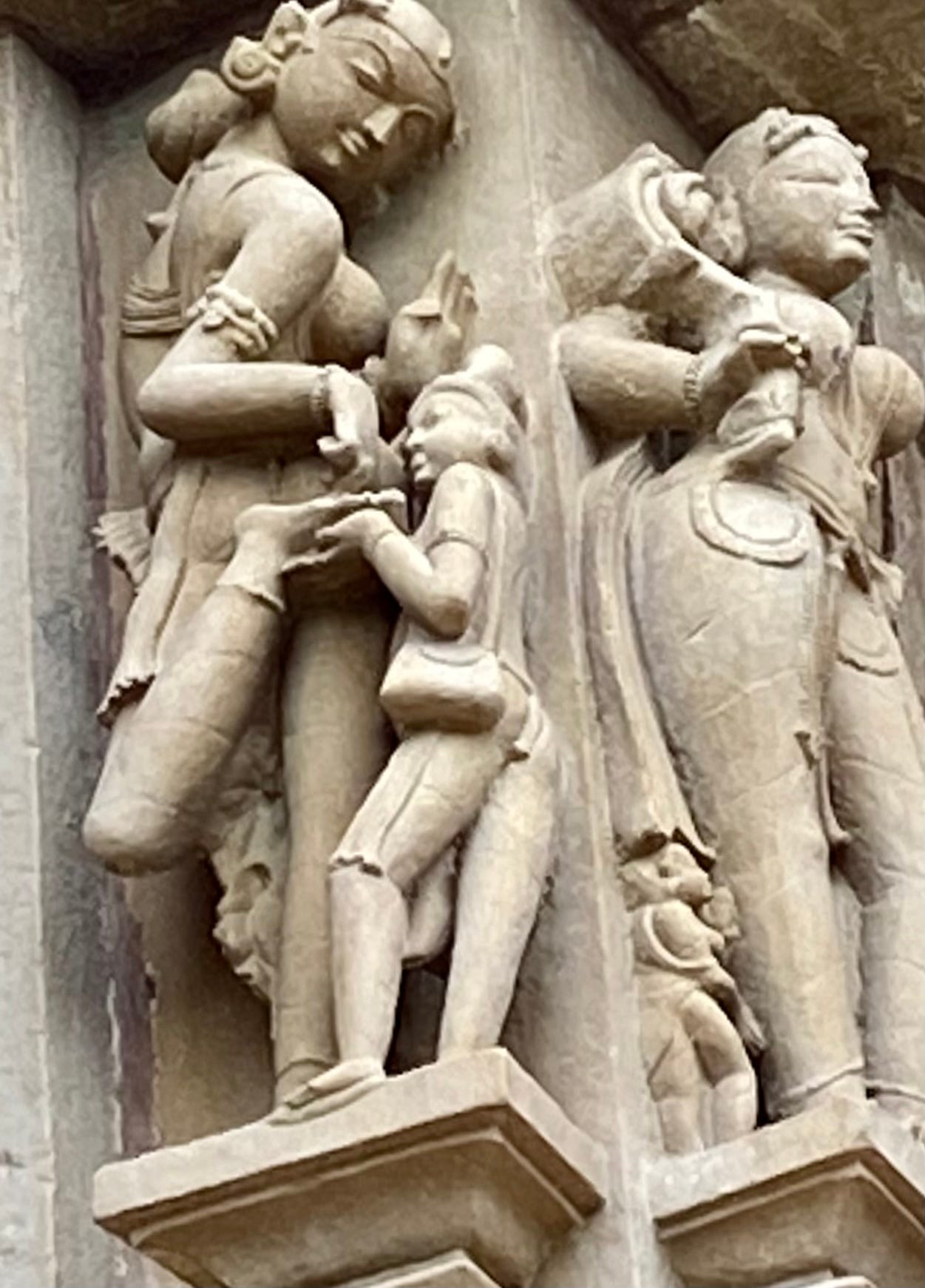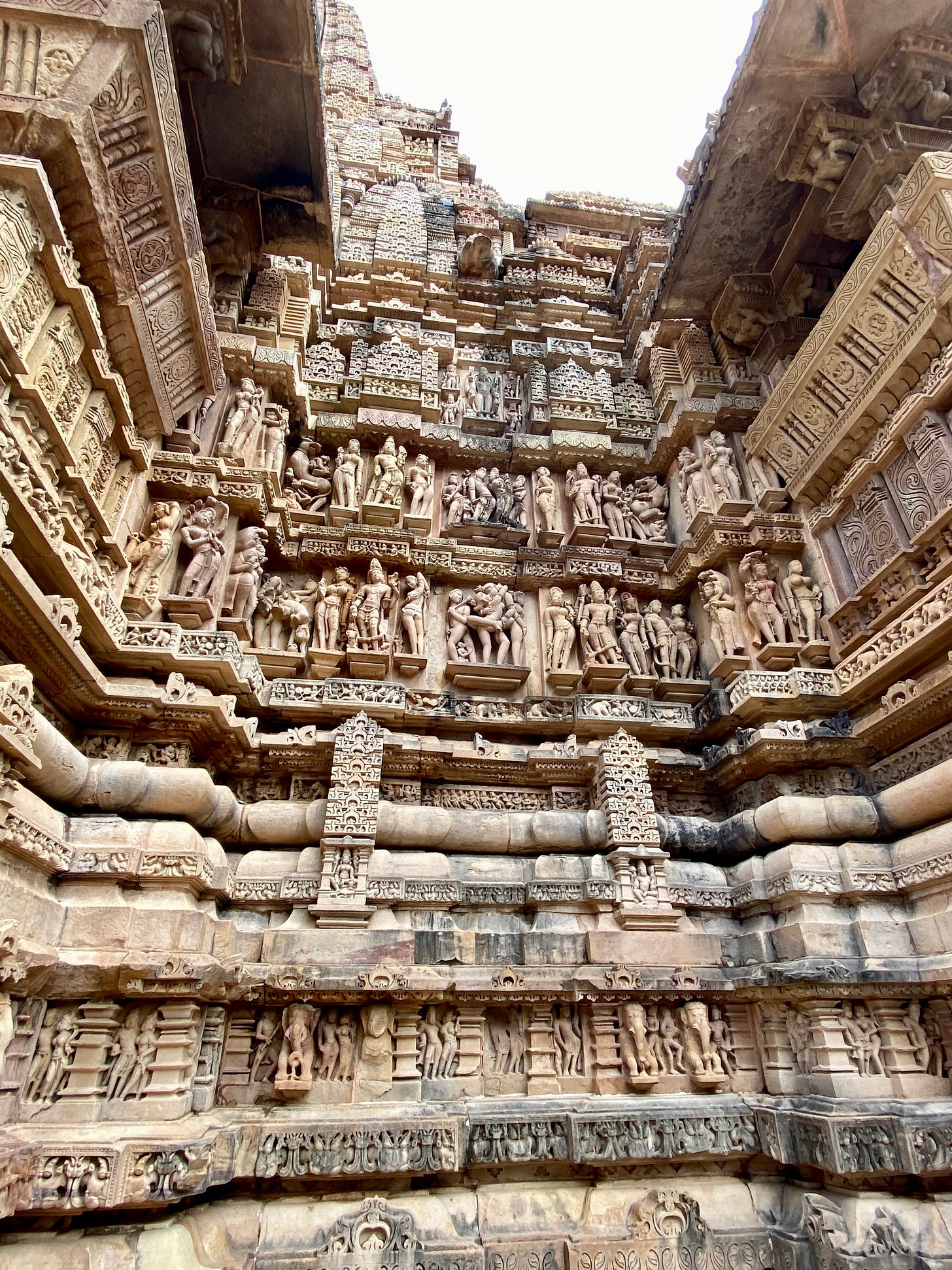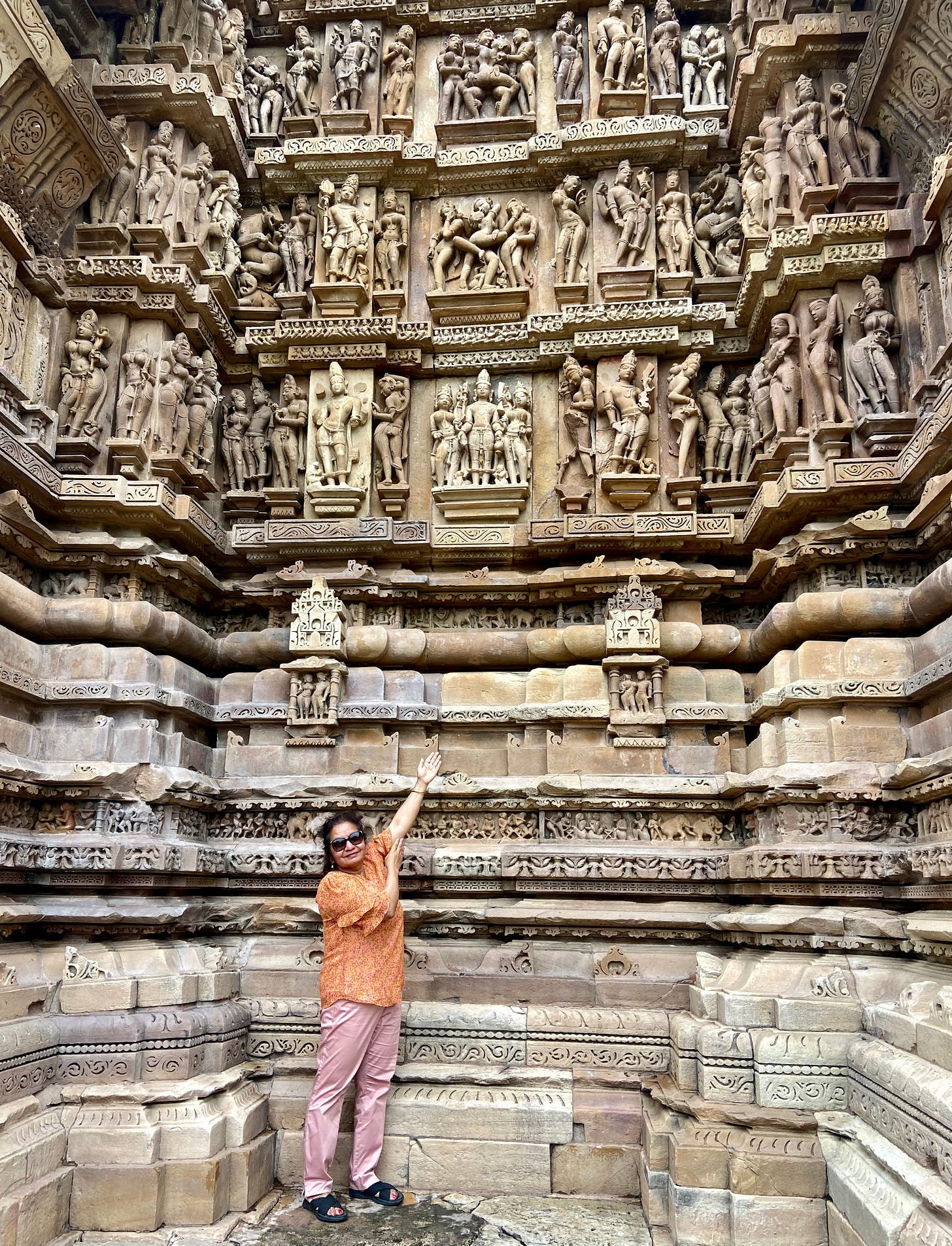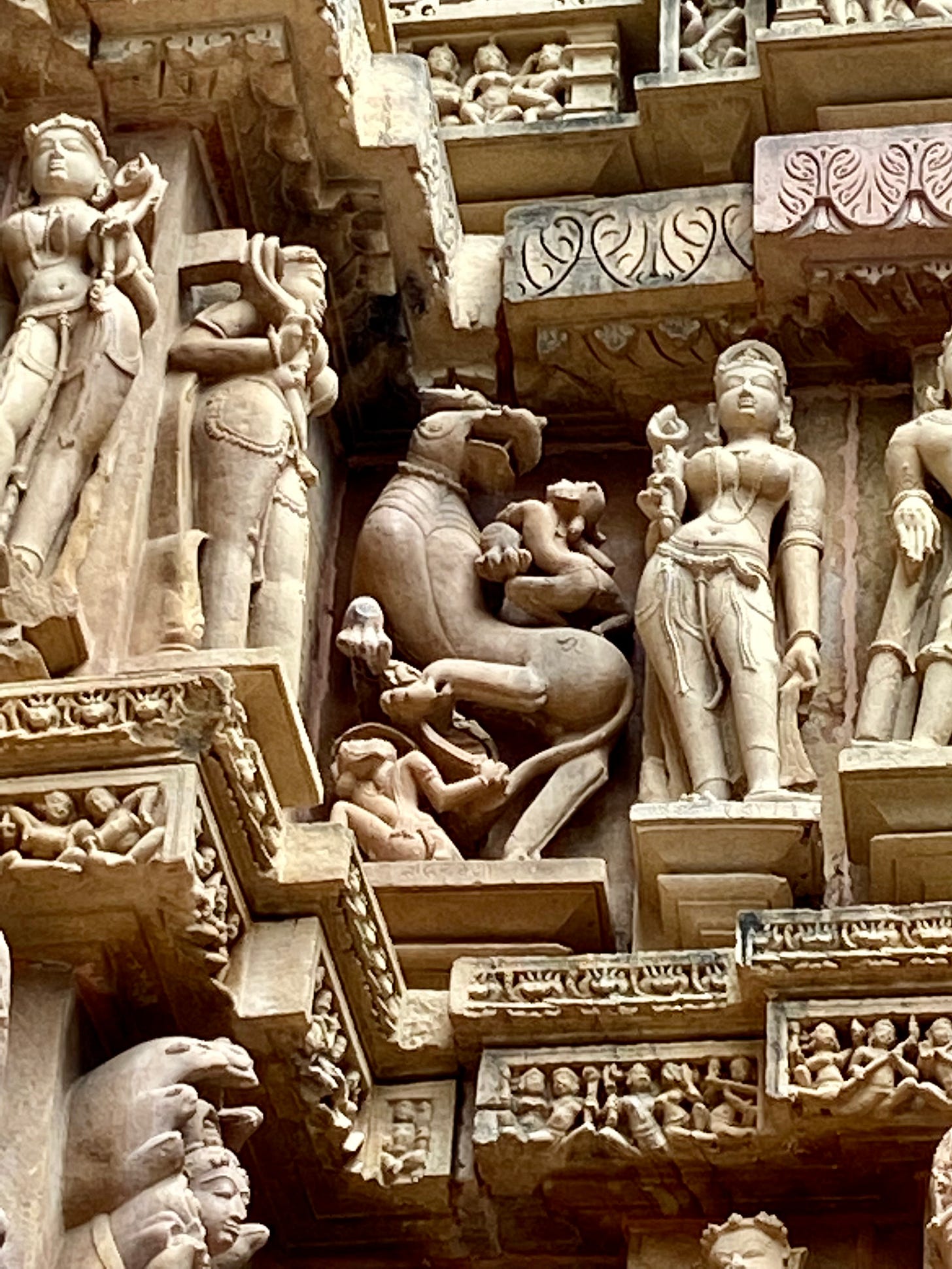#113: Exotic Temples Of Khajuraho
In the second leg of our travel through India, we visited the Khajuraho temples. Built between 950 AD and 1050 AD, these temples are spread in 20 square kilometres area in the central India.
We caught an overnight train from Kurukshetra and got there the next morning. After freshening up and a bit of rest we went exploring the region.
Khajuraho is a very small town, inhabited by just 15,000 people. The name Khajuraho, or Kharjuravāhaka, is derived from ancient Sanskrit (kharjura) means Date Palm and vāhaka, means "one who carries" or bearer.
Khajuraho Group of Monuments has Hindu and Jain temples and is listed in the UNESCO World Heritage. The temples are famous for their erotic sculptures but there is lot more than what meets the eye.
There is a story behind how these temples were built.
Once upon a time, a very beautiful girl, by the name of Hemvati, lived in the central India. She was so beautiful that even the Moon God got enchanted and came to earth.
Their union resulted in the birth of boy by the name of Chandravarman.
Chandravarman grew up to be a powerful king and the founder of the great Chandel dynasty.
When he was an established ruler he had a visitation by his mother in a dream.
She implored him to build temples that would revere human passions and in doing so bring about a realisation of the emptiness of human desires.
Chandravarman obeyed and began the construction of the first temple. In an amazingly short span of 100 years 85 temples were built in the area by the successive rulers. These temples are a testament to Indian art, architecture and sculpture skills.
Chandel dynasty declined in the twelfth century and the temples were left to rot. Out of 85 only 25 survived. Some got swallowed by the forest while other got destroyed by muslim invaders. But those which survived tell the story of the grandeur of that time.
The remaining temples are divided into three complexes - Western, Eastern and Southern complexes. Out of these the Western Complex is the most intact and magnificent.
It’s main temples are Lakshmana Temple, Kandariya Mahadeo Temple, Chitragupta Temple, Matangeshwara Temple, Visvanatha Temple and Nandi Shrine.
Most temples were built during the reigns of kings Yashovarman and Dhanga. Yashovarman's legacy is best exhibited by the Lakshmana Temple while Vishvanatha temple best highlights King Dhanga's reign. The largest and currently most famous surviving temple is Kandariya Mahadeva which was built in the reign of King Vidyadhara.
Kandariya Mahadeo temple is 31m high, is the largest and with exquisite carvings and intricate and detailed craftsmanship. There are three kind of sculptures - those of gods, goddess and divine deities, apsaras or celestial maidens and everyday life.
The temples glorify the women of the time and their life. We could see women playing musical instruments, writing letters, washing hair, dressing up and stretching their bodies which indicate the higher status the fairer sex enjoyed at that time.
For example in the image below a women is pulling a thorn out of her feet. You can see the expression on her face, as well as the folds of the material on her leg as well as around her waist. Her maid is carrying a handbag which is very much like the one I have been carrying during my travels.
But most of the statues depicted everyday life such as a scene from an ashram, a wedding party, a group of people playing various instruments and several of war scenes.
There is so much to be say about temples and the art which depicts religion, spirituality, philosophy, passion, and everyday life. People have done PhDs on these temples. I am barely touching the surface here but writing only a portion of what our guide told us. You got to go there to see them yourself.
Once the Chandel dynasty declined these temple remained hidden in the dense forests for 800 years. Ibn Battuta, the Moroccan traveller, during his stay in India from 1335 to 1342 AD, mentioned visiting Khajuraho temples, in his memoirs:
...near (Khajuraho) temples, which contain idols that have been mutilated by the Moslems, live a number of yogis whose matted locks have grown as long as their bodies. And on account of extreme asceticism they are all yellow in colour. Many Moslems attend these men in order to take lessons (yoga) from them.
— Ibn Battuta, about 1335 AD, Riḥlat Ibn Baṭūṭah, Translated by Arthur Cotterell
Then in 1830s, local people guided a British surveyor, T.S. Burt, to the temples and they thus rediscovered by the global audience.
But conservative British audience couldn’t swallow the explicit sex act depicted in many of the sculptures. They called them vulgar and un necessary, even thought, now-a-days nothing is left for imagination in Hollywood movies.
These sculptures played a significant role in educating the masses, preparing the young hermits (who were living in the temples) to start their domestic duties and giving the sex and passion a legitimate status in human life (necessary for the population growth much needed at the time).
As per Hemavati’s instructions, - to build temples that would revere human passions and in doing so bring about a realisation of the emptiness of human desires - the skilled craftsmen of that time depicted human desires as a dragon in many of the sculptures.
The small men (below and above the dragon) in comparisons to the dragon depict that human desires are always bigger than humans. An the large mouth of the dragon depict that ultimately our desires swallow us.
Visiting the temple was an amazing experience. While coming back I wished that one day I come back here and spend some time researching the understanding the philosophy and psychology of the time and write about it. Our ancestors were more knowledgeable than us. They have preserved a wealth of knowledge here, time-capsuled in the sandstone.
It is up to us now to interpret it use it to enrich our lives.
I am on vacation from 23 August to 14 October. If I miss an issue in this newsletter or don’t respond to your comments in a timely manner, that is the reason.
During this time, I will be writing about my travels. Please keep your comments coming they encourage me to keep writing and tell me what resonates with you.
When I get back, I will run another sprint, Write Your Book In 30 Days, the last one for 2022. It will start on 25 Oct and end on 29 Nov. If you are interested, register your name here.
That’s all from me this week.
If you liked this newsletter, please consider becoming a paid subscriber.


